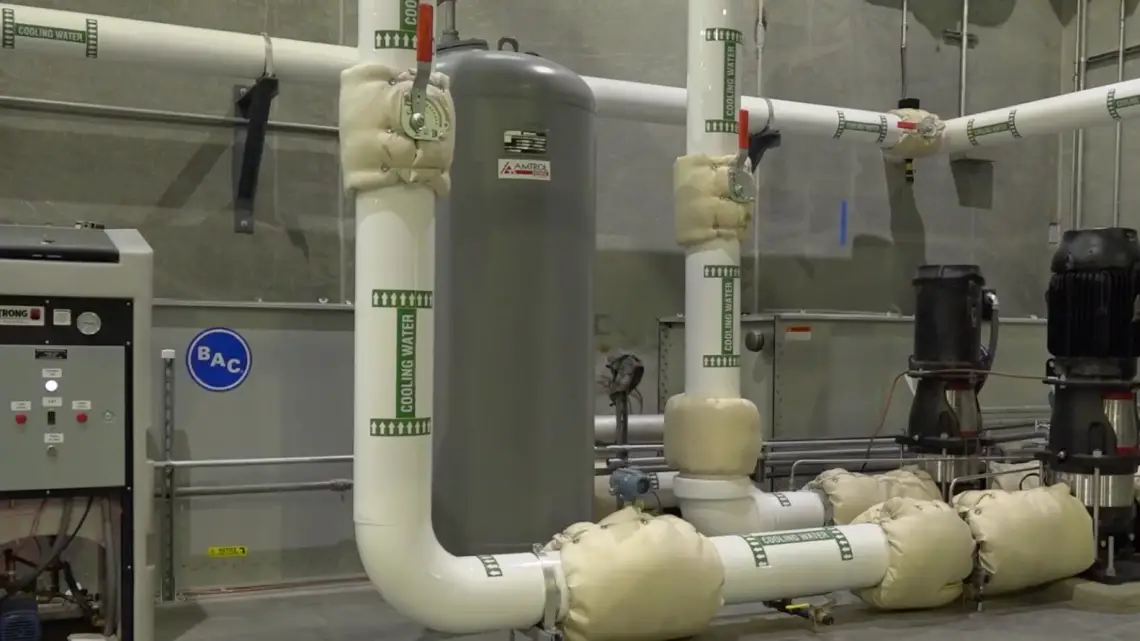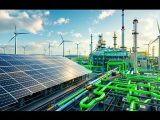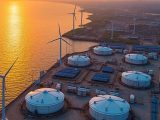
Douglas County PUD Opens Hydrogen Production Facility in East Wenatchee
October 16, 2025On October 9, 2025, Douglas County Public Utility District (PUD) marked a major milestone with the ribbon-cutting of its landmark renewable hydrogen production facility at Baker Flats in East Wenatchee, Washington. Nestled on the north bank of the Columbia River just downstream from the Wells Hydroelectric Project, this plant is the first of its kind in the U.S. to be owned and run by a public utility. The 5-megawatt setup harnesses clean hydroelectric power to drive a Proton Exchange Membrane (PEM) electrolyzer, churning out up to 2 metric tons of green hydrogen daily via water electrolysis. Perfectly timed with National Hydrogen Day during Public Power Week, the ceremony highlighted how public service and cutting-edge tech can go hand in hand. On hand to celebrate were Commission President Molly Simpson, Commissioners Aaron J. Viebrock and Ronald E. Skagen, and General Manager Gary Ivory, whose vision has pushed the PUD’s 80-year track record of renewable energy innovation to bold new heights.
Key Takeaways
- First renewable hydrogen production facility in the U.S. operated by a public utility.
- 5 MW PEM electrolyzer powered by zero-carbon hydroelectricity from Wells Dam.
- Produces up to 2 metric tons of green hydrogen daily, feeding into emerging hydrogen infrastructure.
- Absorbs off-peak generation, cutting mechanical cycling and slashing turbine maintenance.
- June 2025 saw the opening of Washington’s first public hydrogen fueling station at the PUD office.
- Built on the authority granted by Washington Senate Bill 5588 (2019) and backed by a $250,000 planning grant.
Historical Context
The PUD’s journey started back in 2019, when Washington’s Senate Bill 5588—sponsored by Senator Hawkins—gave public utilities the green light to produce and sell renewable hydrogen. A $250,000 feasibility grant championed by Representative Steele kicked things off, proving surplus power from Wells Dam could be turned into clean fuel. Fast-forward to March 2021, and the groundbreaking at Baker Flats began teaching us hard lessons in permits, supply chains, and technical integrations. With East Wenatchee’s orchards sipping water from the Columbia River and existing transmission lines nearby, the site was perfect: minimal new construction, maximum impact. Early community outreach brought local contractors into the loop, growing skills in high-pressure piping and electrochemical systems right here at home.
Technical Details
Inside the plant, the 5 MW PEM electrolyzer is built from multiple membrane electrode assemblies that pressurize hydrogen up to 30 bar, ensuring purity north of 99.9%. Process water is treated and pumped through the stack, where smart controls tweak current density and temperature on the fly to squeeze out peak efficiency. Cranking out 2 metric tons a day, it’s enough to fuel dozens of Toyota Mirai fuel-cell cars. Compressor units then bump up the pressure for storage and dispensing, while an integrated SCADA system decides in real time whether to balance the grid or keep the hydrogen production flowing. And because it’s modular, adding another 10 skids—each about 50 by 20 feet—won’t require tearing up the site.
Strategic Impact
General Manager Gary Ivory likes to point out three big wins: flexibility, regulatory harmony, and new revenue streams. By soaking up extra electricity when demand dips, the electrolyzer eases wear and tear on the Wells Dam turbines—saving on maintenance and extending their lifespan. Politically, the project dovetails with Governor Inslee’s Clean Energy Transformation Act and lines up with coming zero-emission fuel credits, putting the PUD in the front seat of low-carbon hydrogen. On the commercial side, the district can now offer hydrogen to everything from commuter cars to industrial clients and regional aggregators, turning idle electrons into a marketable commodity.
Environmental and Community Benefits
Switching to zero-carbon green hydrogen supports Washington’s push to decarbonize by replacing diesel and natural gas in transport and manufacturing. The ribbon-cutting event featured hands-on safety demos, behind-the-scenes tours, and displays of fuel cell technology—a crowd-pleaser for farmers, teachers, and clean-energy buffs alike. For those who couldn’t make it, the PUD’s YouTube channel is packed with videos on electrolysis and hydrogen storage, spreading the knowledge far beyond the site gates. Locally, the project has sparked new jobs in electrochemical systems, high-pressure piping, and control engineering, building a skilled workforce primed for future hydrogen infrastructure developments.
Looking Ahead
Think of Baker Flats as phase one—there’s space for at least 10 more skids, so we can ramp from 5 MW to a whopping 50 MW in modular chunks. Next up: teaming with agricultural co-ops to make ammonia fertilizer feedstock, and partnering with logistics firms eyeing hydrogen for heavy-duty trucks. On the policy front, the PUD is gearing up to tap state incentives under the Clean Fuels Standard and chasing federal dollars through DOE’s Hydrogen Shot initiative. By distilling the permitting, supply-chain, and grid-integration lessons into best-practice guides, they plan to host peer workshops—sharing the playbook with other utilities. Baker Flats shows exactly how hydropower can anchor an emerging hydrogen economy, linking clean electrons with zero-emission fuel production.
About Douglas County PUD
Established in 1938, Douglas County PUD serves over 80,000 customers across central Washington. Its portfolio features the 840 MW Wells Hydroelectric Project on the Columbia River and a county-wide fiber-optic network. Led by General Manager Gary Ivory alongside Commissioners Molly Simpson, Aaron J. Viebrock, and Ronald E. Skagen, the PUD keeps pushing the envelope on sustainable energy—now charting a path for public utility-owned green hydrogen production.



 With over 15 years of reporting hydrogen news, we are your premier source for the latest updates and insights in hydrogen and renewable energy.
With over 15 years of reporting hydrogen news, we are your premier source for the latest updates and insights in hydrogen and renewable energy.